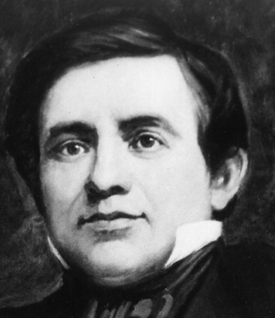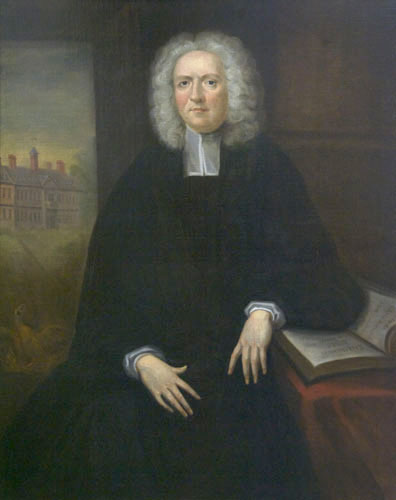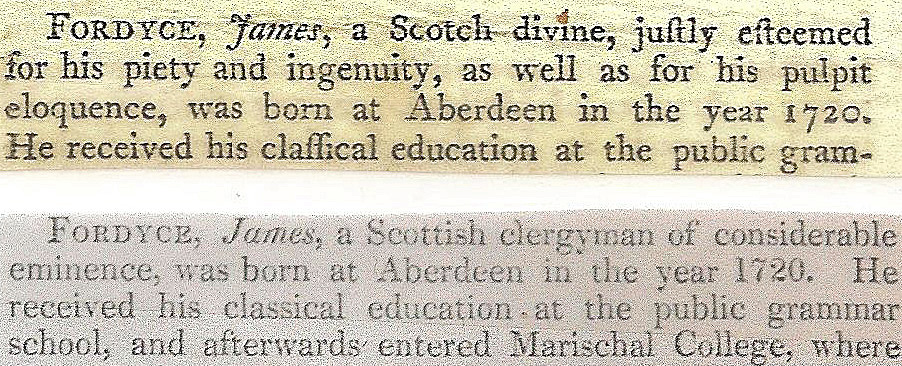|
Alexander Hugh Holmes Stuart
Alexander Hugh Holmes Stuart (April 2, 1807 – February 13, 1891) was a prominent Virginia lawyer and American political figure associated with several political parties. Stuart served in both houses of the Virginia General Assembly (1836-1838, 1857-1861 and 1874-1877), as a U.S. Congressman (1841-1843), and as the Secretary of the Interior (1850 - 1853). Despite opposing Virginia's secession and holding no office after finishing his term in the Virginia Senate during the American Civil War, after the war he was denied a seat in Congress. Stuart led the Committee of Nine, which attempted to reverse the changes brought by Reconstruction. He also served as rector of the University of Virginia. Early years Stuart was born in Staunton, Virginia, one of three sons of judge Archibald Stuart, a protege of Thomas Jefferson and third-generation American of Scots-Irish origin and his wife Eleanor (''nee'' Briscoe), of distant English ancestry. After education by private tutors, Stu ... [...More Info...] [...Related Items...] OR: [Wikipedia] [Google] [Baidu] |
United States Secretary Of The Interior
The United States secretary of the interior is the head of the United States Department of the Interior. The secretary and the Department of the Interior are responsible for the management and conservation of most federal land along with natural resources, leading such agencies as the Bureau of Land Management, the United States Geological Survey, Bureau of Indian Affairs and the National Park Service. The secretary also serves on and appoints the private citizens on the National Park Foundation Board. The secretary is a member of the United States Cabinet and reports to the president of the United States. The function of the U.S. Department of the Interior is different from that of the interior minister designated in many other countries. As the policies and activities of the Department of the Interior and many of its agencies have a substantial impact in the Western United States, the secretary of the interior has typically come from a western state; only one secretary since 1 ... [...More Info...] [...Related Items...] OR: [Wikipedia] [Google] [Baidu] |
American Civil War
The American Civil War (April 12, 1861 – May 26, 1865; also known by other names) was a civil war in the United States. It was fought between the Union ("the North") and the Confederacy ("the South"), the latter formed by states that had seceded. The central cause of the war was the dispute over whether slavery would be permitted to expand into the western territories, leading to more slave states, or be prevented from doing so, which was widely believed would place slavery on a course of ultimate extinction. Decades of political controversy over slavery were brought to a head by the victory in the 1860 U.S. presidential election of Abraham Lincoln, who opposed slavery's expansion into the west. An initial seven southern slave states responded to Lincoln's victory by seceding from the United States and, in 1861, forming the Confederacy. The Confederacy seized U.S. forts and other federal assets within their borders. Led by Confederate President Jefferson Davis, ... [...More Info...] [...Related Items...] OR: [Wikipedia] [Google] [Baidu] |
United States Whig Party
The Whig Party was a political party in the United States during the middle of the 19th century. Alongside the slightly larger Democratic Party, it was one of the two major parties in the United States between the late 1830s and the early 1850s as part of the Second Party System. Four presidents were affiliated with the Whig Party for at least part of their terms. Other prominent members of the Whig Party include Henry Clay, Daniel Webster, Rufus Choate, William Seward, John J. Crittenden, and John Quincy Adams. The Whig base of support was centered among entrepreneurs, professionals, planters, social reformers, devout Protestants, and the emerging urban middle class. It had much less backing from poor farmers and unskilled workers. The party was critical of Manifest Destiny, territorial expansion into Texas and the Southwest, and the Mexican-American War. It disliked strong presidential power as exhibited by Jackson and Polk, and preferred Congressional dominance in lawmaki ... [...More Info...] [...Related Items...] OR: [Wikipedia] [Google] [Baidu] |
1832 United States Presidential Election
The 1832 United States presidential election was the 12th quadrennial presidential election, held from November 2 to December 5, 1832. Incumbent president Andrew Jackson, candidate of the Democratic Party, defeated Henry Clay, candidate of the National Republican Party. The election saw the first use of the presidential nominating conventions, and the Democrats, National Republicans, and the Anti-Masonic Party all used conventions to select their candidates. Jackson won re-nomination with no opposition, and the 1832 Democratic National Convention replaced Vice President John C. Calhoun with Martin Van Buren. The National Republican Convention nominated a ticket led by Clay, a Kentuckian who had served as Secretary of State under President John Quincy Adams. The Anti-Masonic Party, one of the first major U.S. third parties, nominated former Attorney General William Wirt. Jackson faced heavy criticism for his actions in the Bank War, but remained popular among the general ... [...More Info...] [...Related Items...] OR: [Wikipedia] [Google] [Baidu] |
Henry Clay
Henry Clay Sr. (April 12, 1777June 29, 1852) was an American attorney and statesman who represented Kentucky in both the U.S. Senate and House of Representatives. He was the seventh House speaker as well as the ninth secretary of state, also receiving electoral votes for president in the 1824, 1832, and 1844 presidential elections. He helped found both the National Republican Party and the Whig Party. For his role in defusing sectional crises, he earned the appellation of the "Great Compromiser" and was part of the "Great Triumvirate" of Congressmen, alongside fellow Whig Daniel Webster and John C. Calhoun. Clay was born in Hanover County, Virginia, in 1777, beginning his legal career in Lexington, Kentucky, in 1797. As a member of the Democratic-Republican Party, Clay won election to the Kentucky state legislature in 1803 and to the U.S. House of Representatives in 1810. He was chosen as Speaker of the House in early 1811 and, along with President James Madison, led ... [...More Info...] [...Related Items...] OR: [Wikipedia] [Google] [Baidu] |
National Republican Party
The National Republican Party, also known as the Anti-Jacksonian Party or simply Republicans, was a political party in the United States that evolved from a conservative-leaning faction of the Democratic-Republican Party that supported John Quincy Adams in the 1824 presidential election. Known initially as "Adams-Clay Republicans" in the wake of the 1824 campaign, Adams's political allies in Congress and at the state-level were referred to as "Adams's Men" during his presidency (1825–1829). When Andrew Jackson became president, following his victory over Adams in the 1828 election, this group became the opposition, and organized themselves as "Anti-Jackson". The use of the term "National Republican" dates from 1830. Henry Clay served as the party's nominee in the 1832 election, but he was defeated by Jackson. The party supported Clay's American System of nationally financed internal improvements and a protective tariff. After the 1832 election, opponents of Jackson coal ... [...More Info...] [...Related Items...] OR: [Wikipedia] [Google] [Baidu] |
Bar (law)
In law, the bar is the legal profession as an institution. The term is a metonym for the line (or "bar") that separates the parts of a courtroom reserved for spectators and those reserved for participants in a trial such as lawyers. In the United Kingdom, the term "the Bar" refers only to the professional organisation for barristers (referred to in Scotland as advocates); the other type of UK lawyer, solicitors, have their own body, the Law Society. Correspondingly, being "called to the Bar" refers to admission to the profession of barristers, not solicitors. Courtroom division The origin of the term ''bar'' is from the barring furniture dividing a medieval European courtroom. In the US, Europe and many other countries referring to the law traditions of Europe, the area in front of the barrage is restricted to participants in the trial: the judge or judges, other court officials, the jury (if any), the lawyers for each party, the parties to the case, and witnesses givin ... [...More Info...] [...Related Items...] OR: [Wikipedia] [Google] [Baidu] |
Charlottesville, Virginia
Charlottesville, colloquially known as C'ville, is an independent city in the Commonwealth of Virginia. It is the county seat of Albemarle County, which surrounds the city, though the two are separate legal entities. It is named after Queen Charlotte. At the 2020 census, the population was 46,553. The Bureau of Economic Analysis combines the City of Charlottesville with Albemarle County for statistical purposes, bringing its population to approximately 150,000. Charlottesville is the heart of the Charlottesville metropolitan area, which includes Albemarle, Buckingham, Fluvanna, Greene, and Nelson counties. Charlottesville was the home of two presidents, Thomas Jefferson and James Monroe. During their terms as Governor of Virginia, they lived in Charlottesville, and traveled to and from Richmond, along the historic Three Notch'd Road. Orange, located northeast of the city, was the hometown of President James Madison. The University of Virginia, founded by Jefferson, stradd ... [...More Info...] [...Related Items...] OR: [Wikipedia] [Google] [Baidu] |
John Tayloe Lomax
John Tayloe Lomax (January 1781 – 10 October 1862) was an Virginia lawyer and jurist. Early life and education Lomax was born in Portobago, Virginia, Port Tobago, Caroline County, Virginia to the former Anne Corbin Tayloe (1753–1835) of Mount Airy Plantation, Mount Airy in Richmond County, Virginia, and her husband, Major Thomas Lomax (1746-1811). The family included an older daughter who never married, Judith Lomax (1774–1828), and sons Thomas Lunsford Lomax (1778–1805) and Mann Page Lomax (1787–1842; who would join the U.S. Army and retire with the rank of Major). John Lomax received a private education suitable to his class and graduated from St. John's College (Annapolis/Santa Fe), St. John's College in Annapolis, Maryland, Annapolis in 1797. Upon returning to Virginia, Lomax read law. Decades later, in 1847, Harvard Law School awarded him an honorary LL.D. Career Admitted to the Virginia bar, Lomax began practicing law at Port Royal, Virginia, the Caroline Count ... [...More Info...] [...Related Items...] OR: [Wikipedia] [Google] [Baidu] |
College Of William And Mary
The College of William & Mary (officially The College of William and Mary in Virginia, abbreviated as William & Mary, W&M) is a public research university in Williamsburg, Virginia. Founded in 1693 by letters patent issued by King William III and Queen Mary II, it is the second-oldest institution of higher education in the United States and the ninth-oldest in the English-speaking world. Institutional rankings have placed it among the best public universities in the United States. The college educated American presidents Thomas Jefferson, James Monroe, and John Tyler. It also educated other key figures pivotal to the development of the United States, including the first President of the Continental Congress Peyton Randolph, the first U.S. Attorney General Edmund Randolph, the fourth U.S. Supreme Court Chief Justice John Marshall, Speaker of the House of Representatives Henry Clay, Commanding General of the U.S. Army Winfield Scott, sixteen members of the Continental Congr ... [...More Info...] [...Related Items...] OR: [Wikipedia] [Google] [Baidu] |
Scots-Irish American
Scotch-Irish (or Scots-Irish) Americans are American descendants of Ulster Protestants who emigrated from Ulster in northern Ireland to America during the 18th and 19th centuries, whose ancestors had originally migrated to Ireland mainly from the Scottish Lowlands and Northern England in the 17th century. In the 2017 American Community Survey, 5.39 million (1.7% of the population) reported Scottish ancestry, an additional 3 million (0.9% of the population) identified more specifically with Scotch-Irish ancestry, and many people who claim "American ancestry" may actually be of Scotch-Irish ancestry. The term ''Scotch-Irish'' is used primarily in the United States,Leyburn 1962, p. 327. with people in Great Britain or Ireland who are of a similar ancestry identifying as Ulster Scots people. Many left for America but over 100,000 Scottish Presbyterians still lived in Ulster in 1700. Many English-born settlers of this period were also Presbyterians. When King Charles I attempted ... [...More Info...] [...Related Items...] OR: [Wikipedia] [Google] [Baidu] |
Thomas Jefferson
Thomas Jefferson (April 13, 1743 – July 4, 1826) was an American statesman, diplomat, lawyer, architect, philosopher, and Founding Fathers of the United States, Founding Father who served as the third president of the United States from 1801 to 1809. He was previously the nation's second vice president of the United States, vice president under John Adams and the first United States Secretary of State, United States secretary of state under George Washington. The principal author of the United States Declaration of Independence, Declaration of Independence, Jefferson was a proponent of democracy, republicanism, and individual rights, motivating Thirteen Colonies, American colonists to break from the Kingdom of Great Britain and form a new nation. He produced formative documents and decisions at state, national, and international levels. During the American Revolution, Jefferson represented Virginia in the Continental Congress that adopted the Declaration of Independence. As ... [...More Info...] [...Related Items...] OR: [Wikipedia] [Google] [Baidu] |









